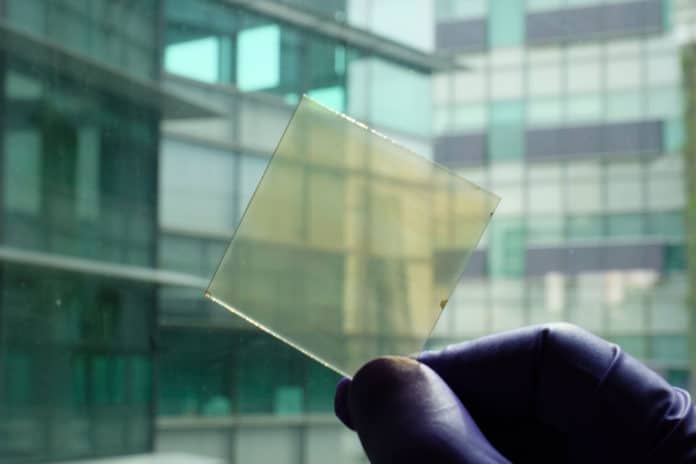Windows are one of the key components in a building’s design, but they are also the least energy-efficient and most complicated part. Window-associated energy consumption (heating and cooling) in buildings accounts for a large percentage of total energy consumption worldwide.
An international team led by scientists from NTU Singapore has developed a ‘self-adapting’ energy-saving glass material that can effectively heat or cool rooms across different climate zones in the world, helping to cut energy usage.
The first-of-its-kind glass is said to automatically respond to changing temperatures by switching between heating and cooling. It is developed using layers of vanadium dioxide nanoparticles composite, Poly(methyl methacrylate) (PMMA), and low-emissivity coating to form a unique structure that could modulate heating and cooling simultaneously.
During summer, the glass suppresses solar heating (near-infrared light) while boosting radiative cooling (long-wave infrared) – a natural phenomenon where heat emits through surfaces towards the cold universe – to cool the room. In the winter, it does the opposite to warm up the room.
The energy-saving glass has no electric component and works by exploiting the spectrums of light responsible for heating and cooling. The NTU team believes their innovation offers a convenient way to conserve energy in buildings since it does not rely on any moving components, electrical mechanisms, or blocking views, to function.
In lab tests, the glass allowed a controlled amount of heat to emit in various conditions (room temperature – above 70°C), proving its ability to react dynamically to changing weather conditions. The team found the glass they developed showed energy savings in both warm and cool seasons, with an overall energy-saving performance of up to 9.5% when compared to commercially available low-emissivity glass in a simulated medium-sized office building.
“The results prove the viability of applying our glass in all types of climates as it is able to help cut energy use regardless of hot and cold seasonal temperature fluctuations. This sets our invention apart from current energy-saving windows, which tend to find limited use in regions with less seasonal variations,” said Wang Shancheng, first author of the study.
A Singapore patent has been filed for the innovation. As the next steps, the research team is aiming to achieve even higher energy-saving performance by working on the design of their nanocomposite coating.
